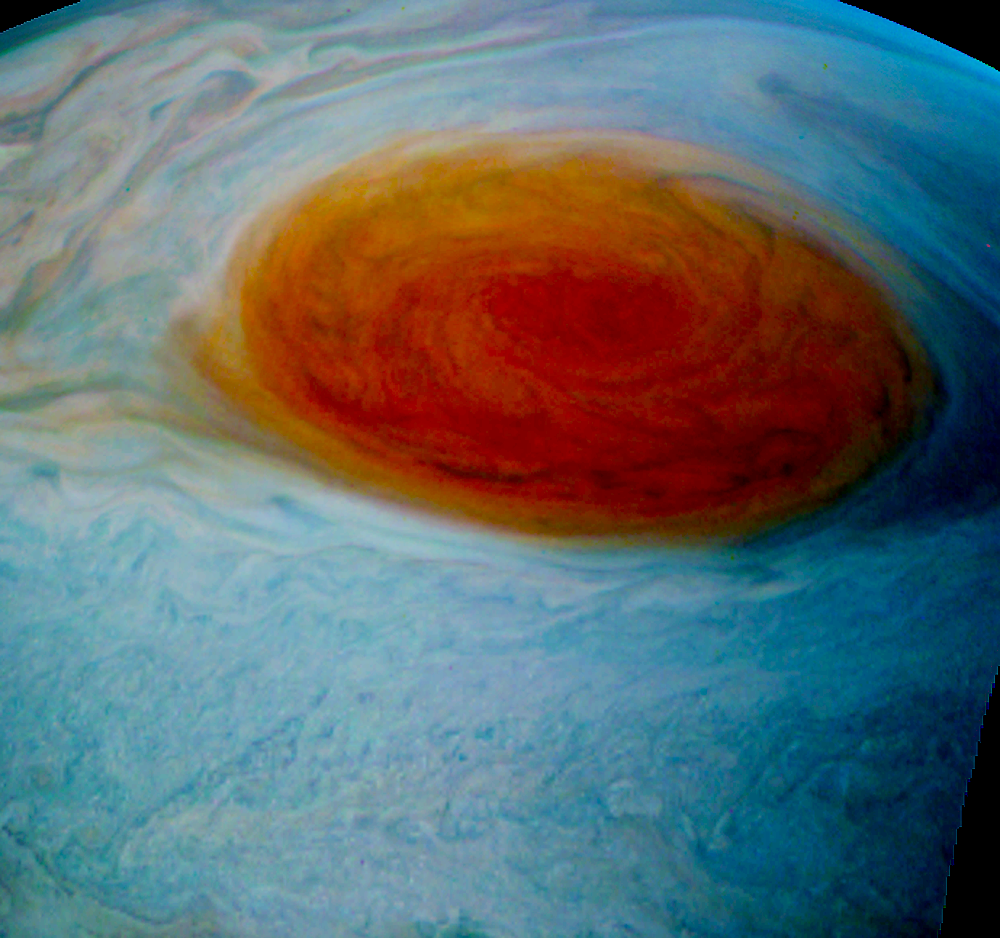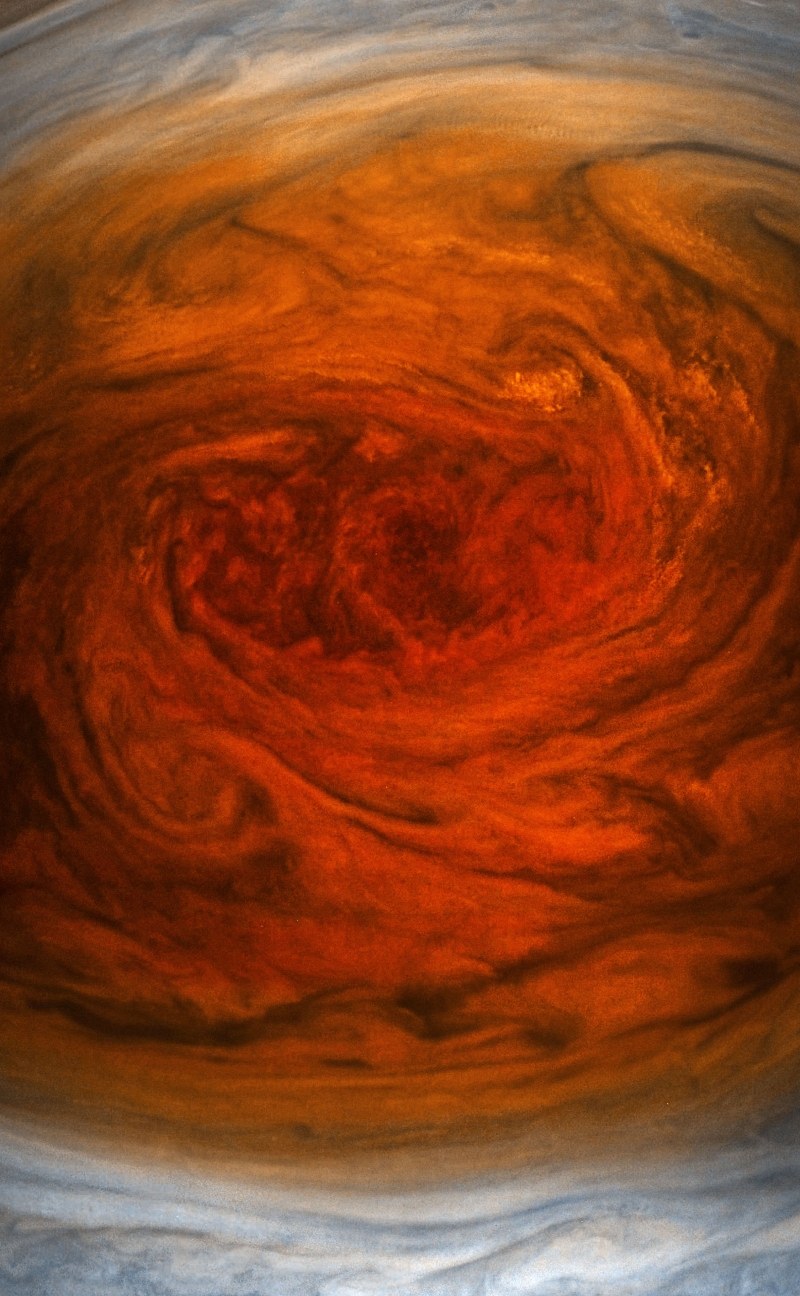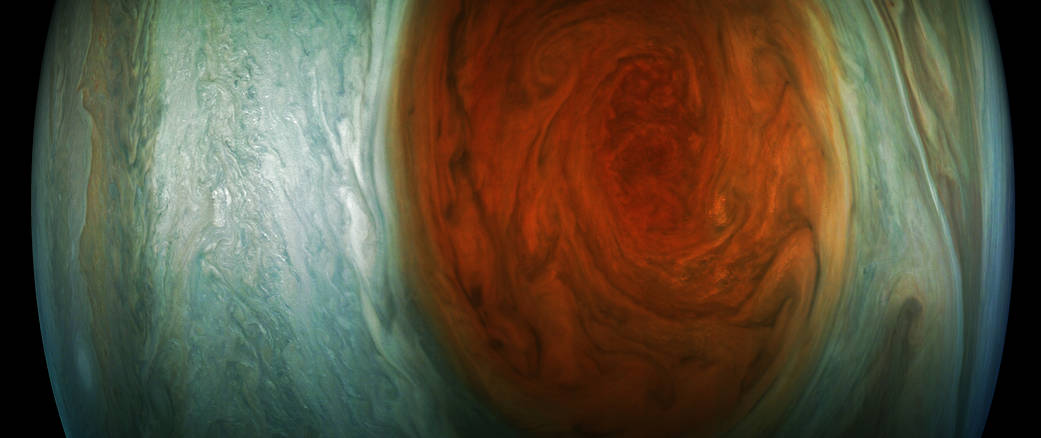Jupiter's Great Red Spot is perhaps as iconic a feature as Saturn's rings or Uranus' unfortunate name. Scientists, which have been monitoring the colossal storm since 1830, believe it has raged on for more than 350 years.
Now thanks to NASA's Juno mission, we've got our closest look ever at the Great Red Spot.
On Monday, the Juno spacecraft conducted a flyby of our solar system's largest planet in which it passed about 5,600 miles above the clouds of the storm. All of Juno's data-collecting instruments were operating during the flyby including the JunoCam imager.

Photos from the flyby were then beamed back home and released by NASA.
Jim Green, NASA's director of planetary science, described the highly-anticipated images as the "perfect storm" of art and science. With data from Voyager, Galileo, New Horizons, Hubble and now Juno, Green said, we have a better understanding of the composition and evolution of this iconic feature.
Citizen scientists have since processed the raw images, applying color enhancements and other techniques to create breathtaking photos that better highlight details that might have otherwise gone overlooked (most of the images you'll see on news sites and social media are of this variety). Those interested in checking out the raw images can do so over on NASA's Juno mission website.

As of April 3, 2017, the storm measured 10,159 miles across, or roughly 1.3 times as wide as our own planet.
Juno's next rendezvous with Jupiter will take place on September 1.
Image credit: 1) Gerald Eichstädt 2) Tom Momary 3) Sean Doran
